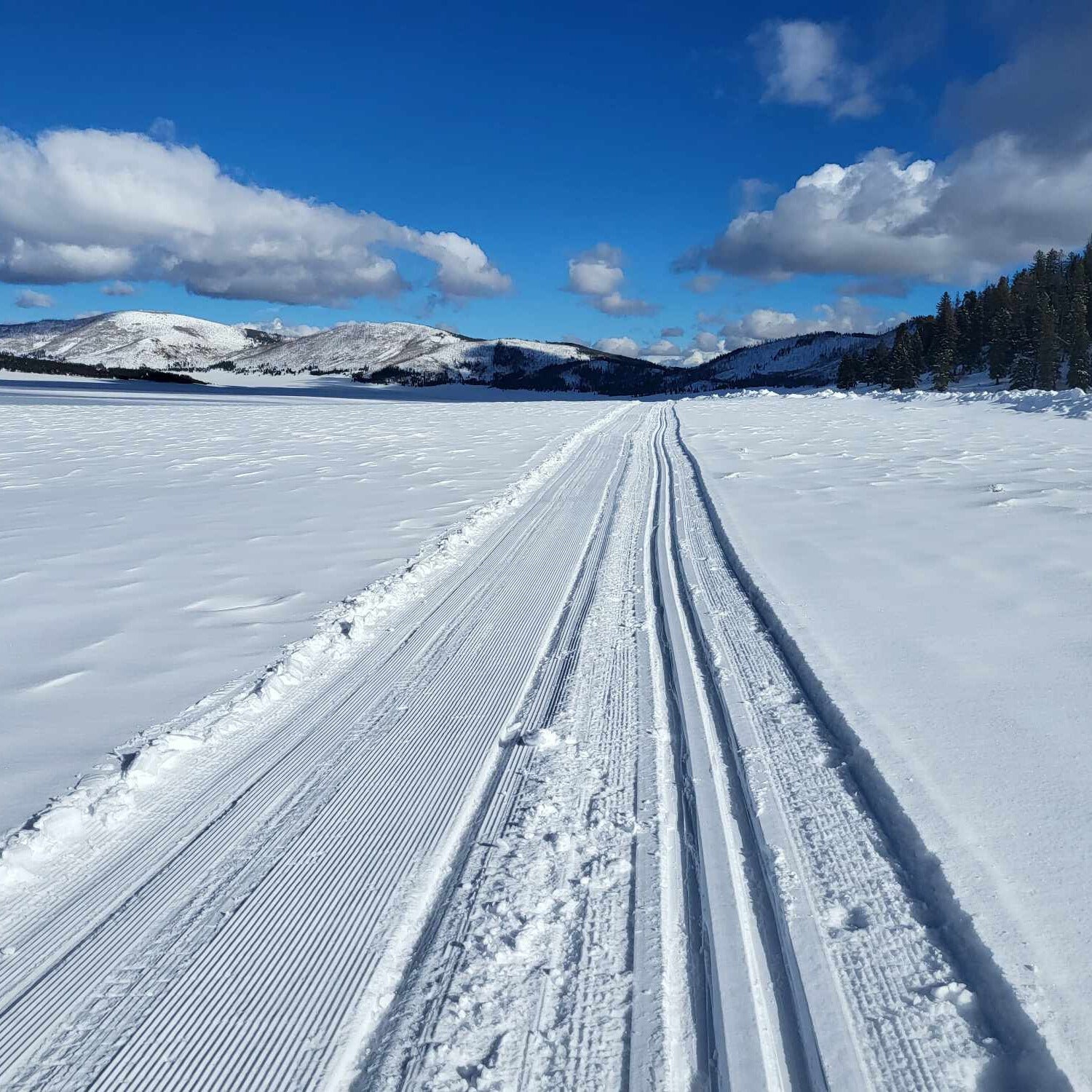Your Cart is Empty
accepting gear drop offs Mon-Sat 10am-5pm. No Consignment acceptance on Sundays.
accepting gear drop offs Mon-Sat 10am-5pm. No Consignment acceptance on Sundays.

Telemarking is the original skiing style that, instead of becoming obsolete, keeps being reinvented. It’s fun, challenging, and a good quad workout.
Telemark skiing is a blend of Nordic and alpine skiing. Central to this style is the telemark binding, which allows the heel to lift and initiate the tele turn.
Ready to pick up some telemark gear? Here’s some great news: Unlike downhill bindings, telemark bindings don’t get put on indemnified lists, meaning there is no set age at which they cannot be mounted. This meansbuying used telemark gear can be a great deal.
That said, there are several types of telemark bindings, and which one you choose will dictate what you can and can’t reasonably do on skis as well as what kinds of bindings you must have.
Here’s what you need to know about telemark bindings:
The 75mm binding, often referred to as the three-pin binding, is a classic telemark binding that dates back to the early 20th century. It has a 75mm-wide toe box that clamps the boot's toe into place with three metal pins and a locking bail.
Pros: Lightweight, simple, and in use for decades. Can even be paired with leather boots, keeping the gear flexible and classic.
Cons: Lacks the rigidity and control that modern telemark skiers seek out for aggressive downhill runs. Poor clamping or a bad fall can mean the boot pin holes are damaged or ruined.
Stepping up from three pins, a variety of cable bindings offer much greater control and stability. When shopping used, look for damage to springs and features like free pivot and heel risers. Most oots that fit 75mm toe plates can also fit cable bindings.
Pros: Improved downhill performance and more aggressive skiing.
Cons: Can feel heavy for touring. It’s not uncommon for ski edges to cut into and even sever the cables.
The New Telemark Norm (NTN) binding system, introduced in the mid-2000s, represents the most significant shift in telemark skiing gear in decades. NTN bindings rely on a boot's toe and midsole to secure the skier to the ski. This creates more direct power transmission, better edge control, the ability to release, and a step-in system for ease of use. NTN bindings require an NTN-compatible boot.
Pros: Unparalleled control and responsiveness ideal for aggressive skiing, but also easier to use, and a release mechanism. Step-in operation and a toe that freely pivots, making them much easier to climb in than 75mm boots.
Cons: Heavier and bulkier, and the need for NTN-specific gear means skiers with older setups may need to replace their entire kit. Generally more expensive than 75mm. Not everyone likes the way NTN initiates turns.
In recent years, some manufacturers have begun to blend telemark bindings with alpine touring (AT) technology. These "tele-tech" bindings use the tech toe from AT setups, which grips the boot with pins, while still allowing the free-heel movement required for telemark skiing.
Pros: Uphill efficiency and downhill freedom and performance.
Cons: Still relatively niche and can be expensive. They also require tech-compatible boots, which may not be widely available for telemark skiers.
Telemark skiers today can choose from a wide variety of setups. Thanks toDurango Outdoor Exchange, you can pick up telemark skis, boots, and bindings at drastically reduced prices. Stop by to see what we’ve got in store!

Work crews were busy over the off season making changes to ski areas across the region. While the hoped-for new lifts at Purgatory aren’t going to spin, there are plenty of reasons for you toget some wax (or new skis) from Durango Outdoor Exchange and hit the slopes this winter.

Thanksgiving is almost here–and skiing this early is always a gamble. Here are some non-skiing warm(er) weather destination ideas for the long break.

Just a couple hours from Durango, Valles Caldera is a great cross-country skiing destination, with surprisingly good snow and very few visitors.
Valles Caldera National Preserve is a popular hiking destination in the summer and a surprisingly great skiing destination in the winter.